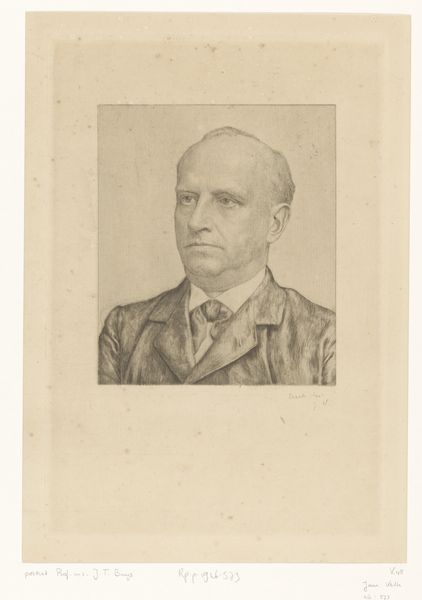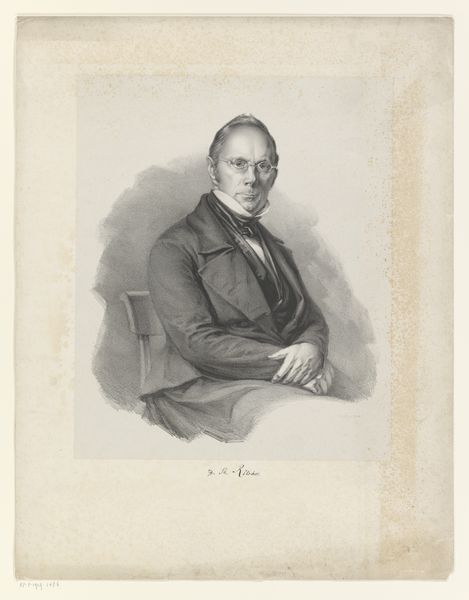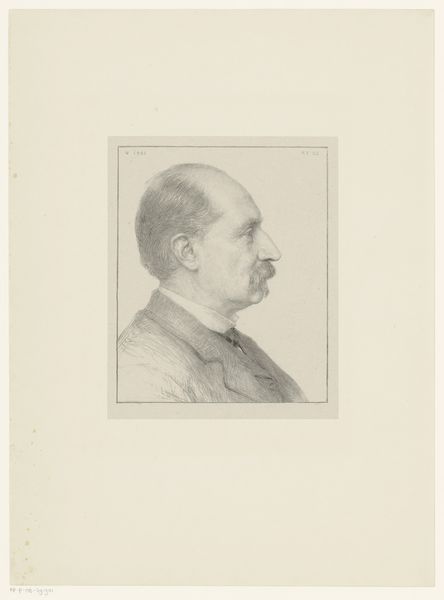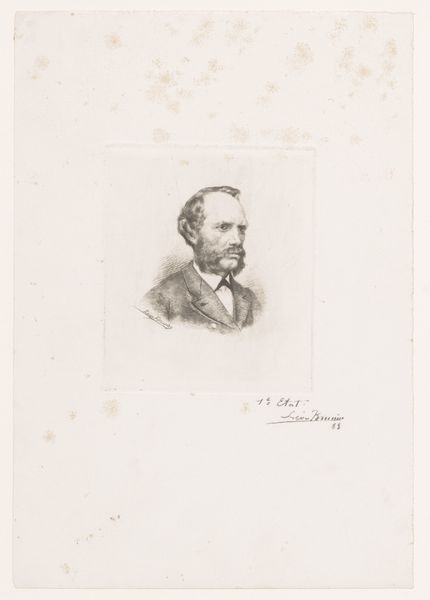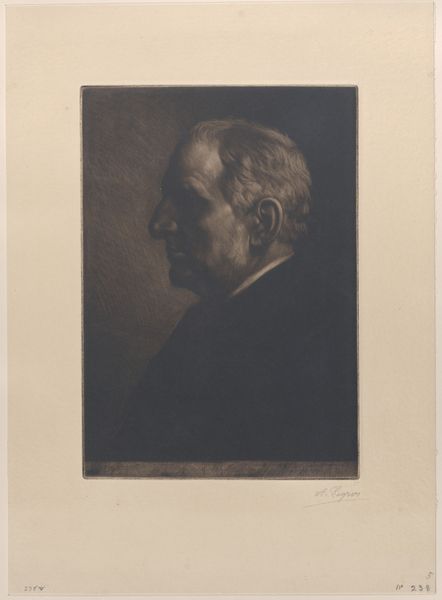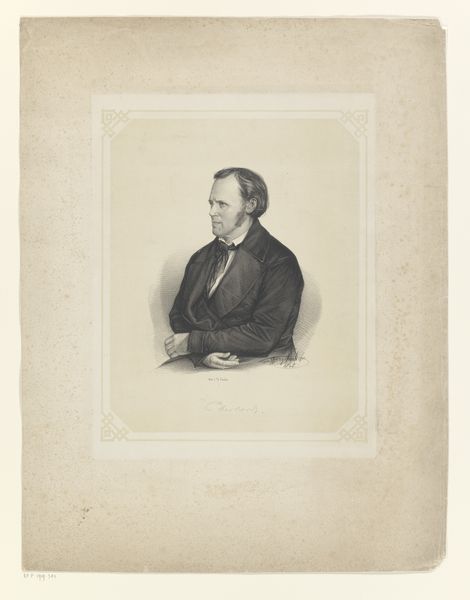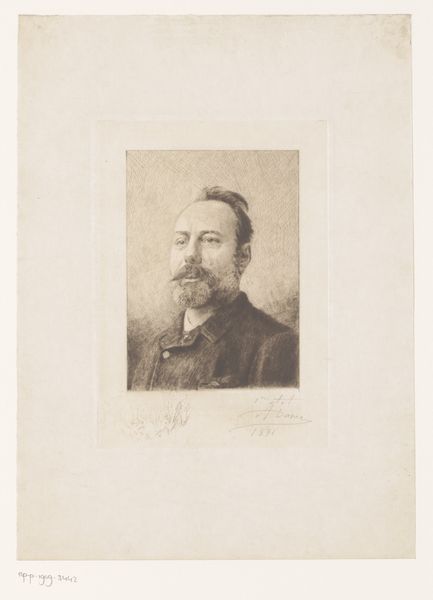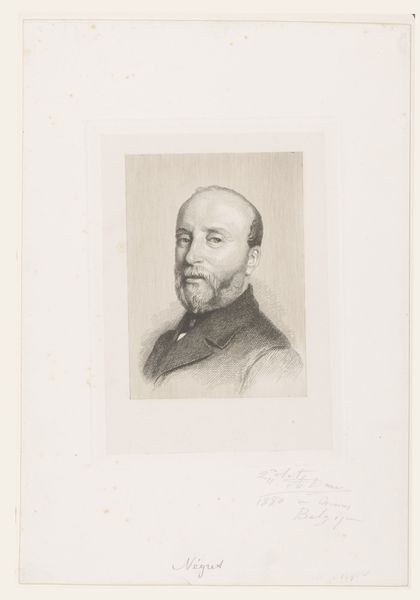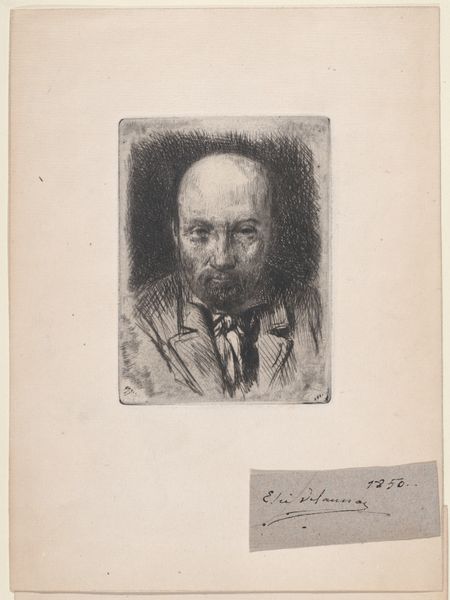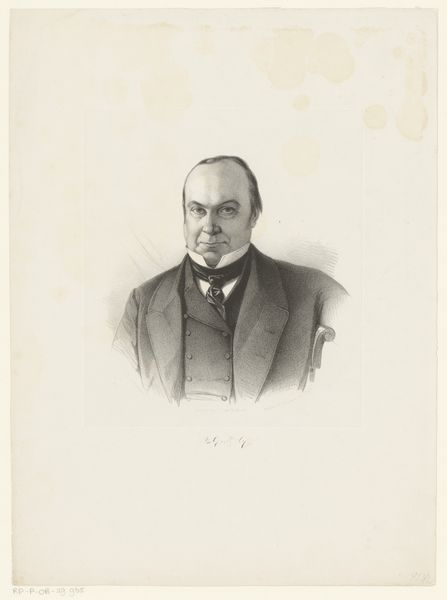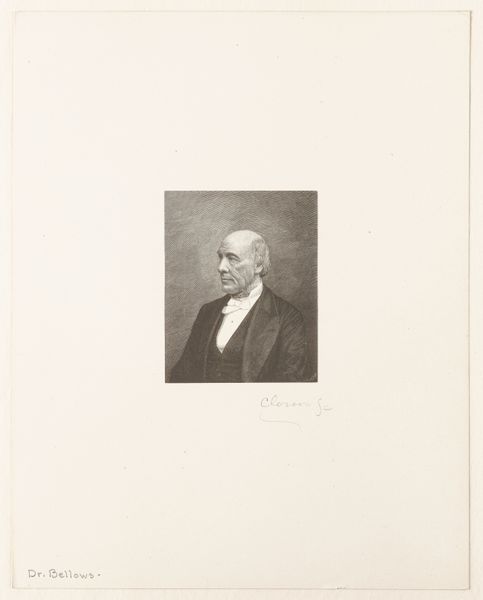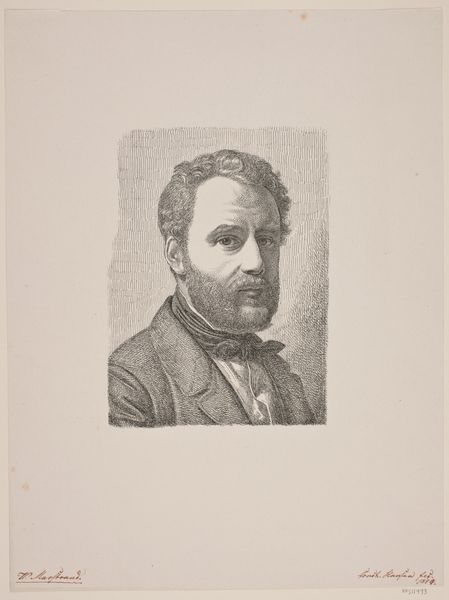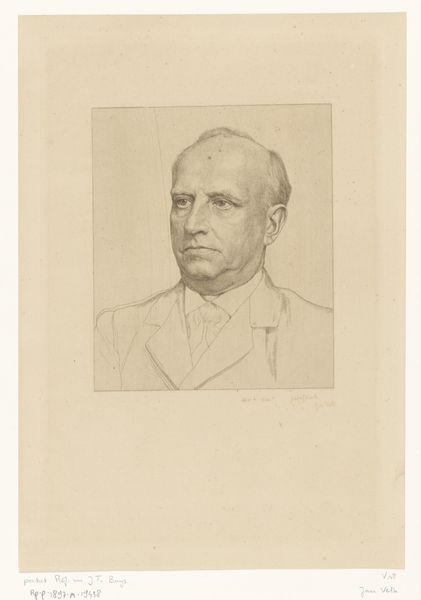
print, etching, intaglio, mezzotint, graphite, engraving
#
portrait
# print
#
etching
#
intaglio
#
charcoal drawing
#
portrait reference
#
mezzotint
#
graphite
#
portrait drawing
#
engraving
#
realism
Dimensions: 174 mm (height) x 150 mm (width) (plademaal)
Curator: Looking at this remarkable etching titled "Maleren Otto Balle," created by G.V. Blom in 1917, I'm immediately drawn to the intense gaze of the sitter. There is so much emotion, maybe even conflict in this image. Editor: Yes, there's an undeniable intensity! I also note how the square composition of the print lends an air of stability, despite the visible artistic process captured in its textured surface and soft monochrome. This work definitely places Balle as a part of the turn-of-the-century artistic moment. Curator: And he gazes so assuredly at the viewer. Consider the power inherent in a portrait – especially when realized in this technique. Prints can be widely disseminated; thus an individual gains prominence beyond his immediate social circle. This process transforms him into a potent cultural symbol. Editor: Precisely. This etching and intaglio really allow Blom to show his subject in ways photography could not. Blom could show both the character of his friend as well as give him an iconic presentation for a contemporary audience. And that magnificent moustache adds such character! But what about the politics here? Denmark was neutral in 1917 but many felt connected to the Great War raging elsewhere. What did it mean for one artist to portray another in this style during such fraught times? Curator: That is an interesting and crucial lens. Perhaps Blom saw in Balle's artistic practice an unwavering dedication reminiscent of the resolve demanded by the war itself, and he sought to memorialize him accordingly. After all, artists like Balle played crucial roles in visualizing national identity and cultural memory during that period. This portrait then acts as a site where personal and cultural meanings merge through symbol and technique. Editor: So ultimately, even through this somewhat unassuming, intimate portrait, we encounter dialogues concerning national identity and social value that resonate deeply, especially during a war. I suppose that helps to highlight art’s role as a mediator and commentator. Curator: Indeed. It offers a glimpse into the symbolic value ascribed to artists at a time of great transformation and struggle. Editor: I see the past a bit more clearly now.
Comments
No comments
Be the first to comment and join the conversation on the ultimate creative platform.
